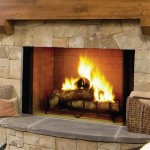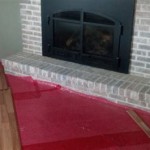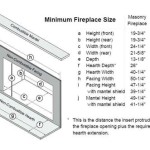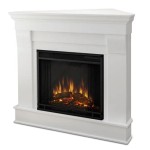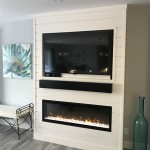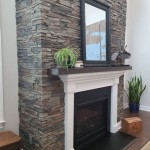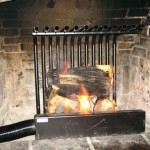Interior Design Ideas For Living Room With Fireplace
The fireplace, often considered the heart of a home, serves as a natural focal point in a living room. Integrating it seamlessly with the overall interior design requires careful consideration of aesthetics, functionality, and the existing architectural style. Effectively incorporating a fireplace into a living room design can create a warm, inviting, and visually appealing space.
The design process should begin with an assessment of the fireplace itself. Is it a traditional wood-burning fireplace, a modern gas fireplace, or perhaps an electric fireplace? The type will inform the design choices, particularly regarding materials and style. A stone fireplace, for example, lends itself well to rustic or traditional designs, while a sleek, minimalist fireplace might be more suitable for a modern or contemporary living room. The size and location of the fireplace are also crucial factors. A large, prominent fireplace can dominate the room, while a smaller, understated fireplace may need to be emphasized with strategic design elements.
The surrounding space must complement the fireplace. The furniture arrangement, color palette, and choice of accessories all play a vital role in creating a cohesive and harmonious living room design. Consider the scale of the furniture in relation to the fireplace. Oversized furniture can overwhelm a smaller fireplace, while undersized furniture might look lost in a room dominated by a large fireplace. Similarly, the color palette should be carefully chosen to either highlight or subtly blend the fireplace with the rest of the room. A monochromatic color scheme can create a sophisticated and elegant look, while pops of color can add visual interest and personality.
Choosing the Right Fireplace Surround and Mantel
The fireplace surround and mantel are essential elements in defining the style and character of the fireplace. The surround provides the visual frame for the firebox, while the mantel offers a surface for display and decoration. The choice of materials for the surround and mantel should reflect the overall design aesthetic of the living room. Common materials include stone, brick, wood, tile, and metal.
Stone surrounds offer a rustic and timeless appeal, often associated with traditional or farmhouse-style living rooms. Different types of stone, such as fieldstone, river rock, or stacked stone, can be used to create varying textures and visual effects. Brick surrounds provide a more urban and industrial feel, often seen in loft apartments or contemporary homes. Painted brick can also offer a more refined and elegant look. Wood surrounds add warmth and character to a living room, complementing a wide range of styles from traditional to modern. The type of wood, finish, and detailing can significantly impact the overall look and feel. Tile surrounds offer a versatile option, with a wide range of colors, patterns, and textures available. Tile can be used to create intricate designs or simple, minimalist surrounds. Metal surrounds, typically made of steel or cast iron, provide a sleek and contemporary look, often seen in modern or industrial-style living rooms.
The mantel serves as a focal point for decorative items. It can be used to display family photos, artwork, candles, or seasonal decorations. The size and style of the mantel should be proportionate to the fireplace and the overall dimensions of the room. A large, ornate mantel may be suitable for a grand living room, while a smaller, simpler mantel might be more appropriate for a cozy space. Consider the functionality of the mantel as well. If it will be used for storage, choose a mantel with built-in shelves or cabinets. If it will be used for display, ensure it has sufficient surface area and is positioned at an appropriate height.
Furniture Arrangement Around the Fireplace
Arranging furniture around the fireplace requires thoughtful planning to maximize both functionality and aesthetics. The primary goal is to create a comfortable and inviting seating area that encourages conversation and relaxation. The fireplace should be the focal point of the arrangement, with furniture positioned to take advantage of its warmth and visual appeal.
A common approach is to center the furniture around the fireplace, creating a symmetrical arrangement. This can be achieved by placing a sofa directly facing the fireplace, with chairs flanking either side. A coffee table can be placed in the center of the seating area to provide a surface for drinks, snacks, and books. The distance between the furniture and the fireplace should be carefully considered. Furniture that is too close to the fireplace can be uncomfortable, while furniture that is too far away can feel disconnected. A general rule of thumb is to maintain a distance of at least three feet between the furniture and the fireplace.
An alternative approach is to create an asymmetrical arrangement, which can be more dynamic and visually interesting. This can be achieved by placing a sofa at an angle to the fireplace, with chairs and other seating options arranged around it. A large rug can be used to define the seating area and anchor the furniture. Consider the flow of traffic through the room when arranging furniture. Ensure that there is ample space for people to move around without bumping into furniture or feeling crowded.
Lighting and Accessories for a Fireplace Living Room
Lighting and accessories are essential elements that enhance the ambiance and character of a living room with a fireplace. Lighting can be used to highlight the fireplace, create a warm and inviting atmosphere, and provide functional illumination for reading and other activities. Accessories can add personality, visual interest, and texture to the space.
Ambient lighting, such as recessed lighting or chandeliers, provides overall illumination for the room. Task lighting, such as floor lamps or table lamps, provides targeted illumination for specific activities. Accent lighting, such as spotlights or picture lights, can be used to highlight the fireplace and other decorative elements. Dimmers can be used to adjust the intensity of the lighting, creating different moods and atmospheres. The color temperature of the lighting should also be considered. Warm lighting, with a yellowish hue, creates a cozy and inviting atmosphere, while cool lighting, with a bluish hue, provides a more modern and energetic feel.
Accessories can be used to add personality and visual interest to the living room. Consider incorporating textiles, such as throw pillows, blankets, and rugs, to add texture and warmth. Artwork, such as paintings, prints, and sculptures, can add color and character to the space. Plants, both real and artificial, can bring life and freshness to the living room. Candles, lanterns, and other decorative objects can add ambiance and visual appeal. The choice of accessories should reflect the overall design aesthetic of the living room and the homeowner's personal style. Avoid cluttering the space with too many accessories, as this can create a cluttered and overwhelming feel. Instead, focus on selecting a few key pieces that complement the fireplace and enhance the overall design.

10 Living Room Fireplace Ideas From Style To Placement

Fireplace Design Ideas For Your Home Designcafe

46 Stunning Living Room With Fireplace Design Ideas Family Remodel Farm House

36 Fireplace Decor Ideas Modern Mantel

75 All Fireplaces Living Room Ideas You Ll Love February 2024 Houzz

8 Designer Approved Living Room Layouts With A Fireplace Decorilla Interior Design

36 Fireplace Decor Ideas Modern Mantel

Unveiling The 63 Best Modern Fireplace Design Ideas In 2024 Living Room Designs

Bring On The Heat 28 Modern Fireplace Ideas To Keep You Warm Décor Aid

40 Best Fireplace Décor Ideas Mantel


